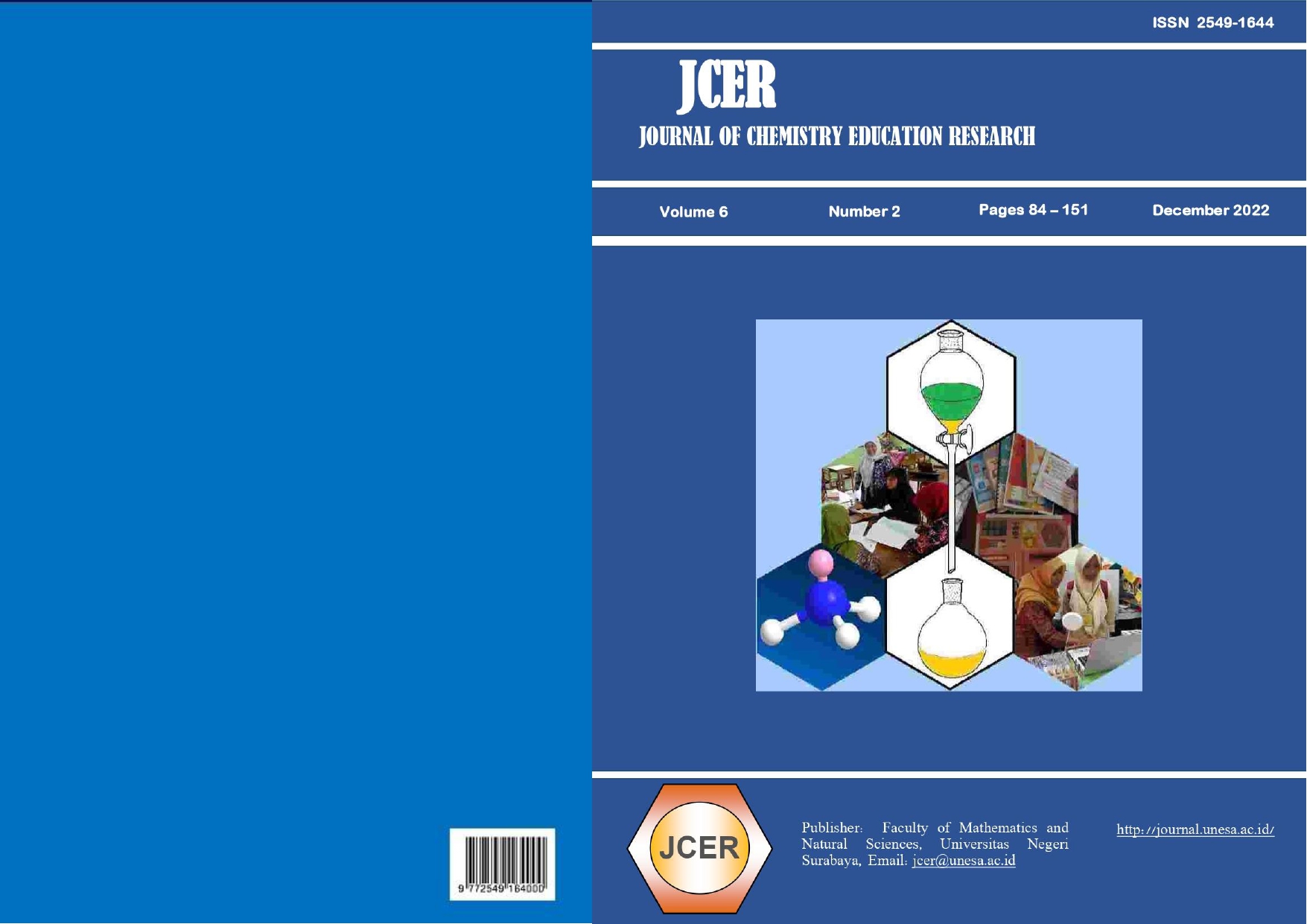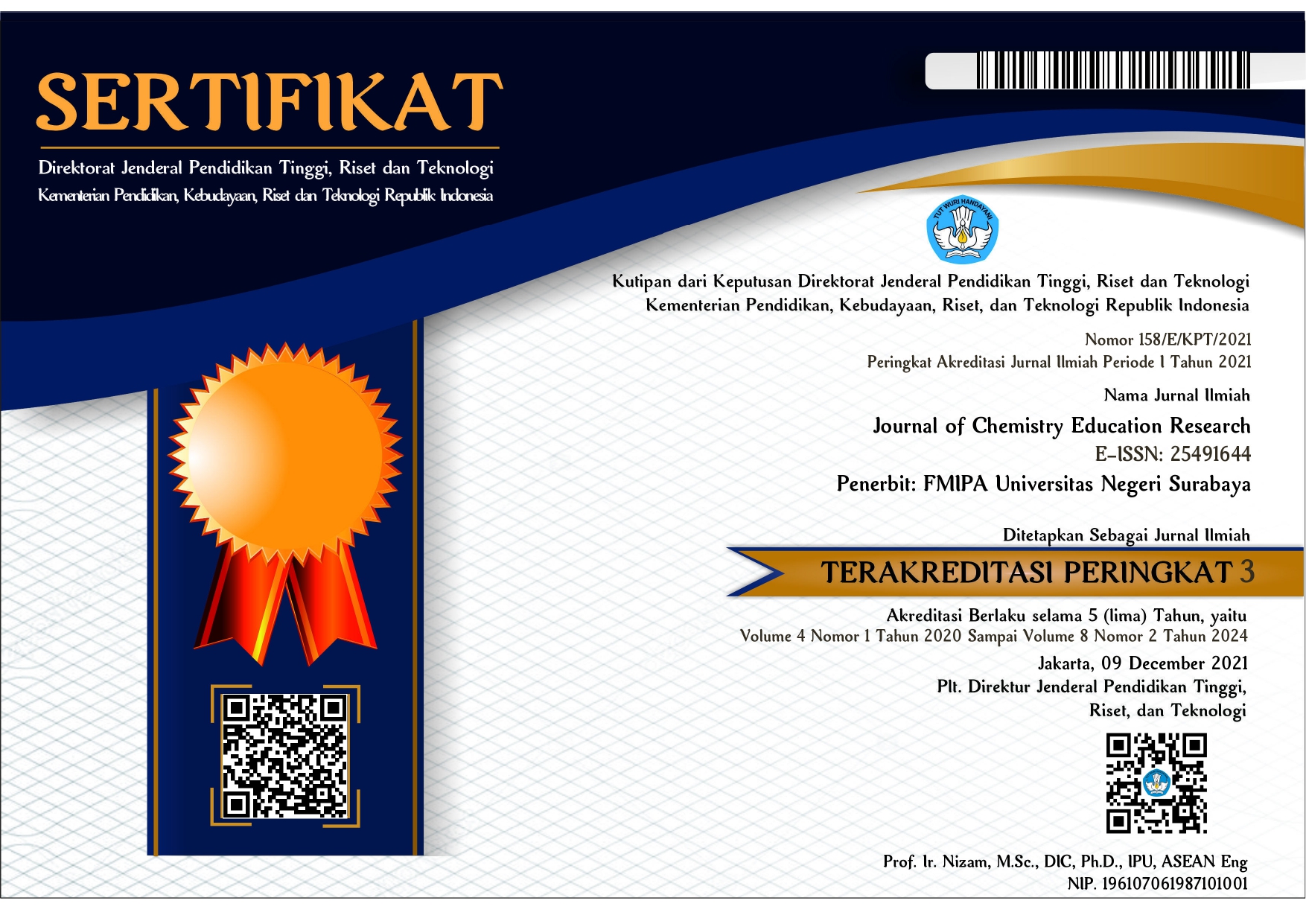STUDENT’s PERCEPTION OF ONLINE BASED CHEMISTRY LEARNING PROCESS
DOI:
https://doi.org/10.26740/jcer.v6n2.p110-118Keywords:
Chemistry Learning, Online Learning, Perception, StudentsAbstract
The COVID-19 pandemic has changed the learning system in Indonesia to online-based learning. Students' perceptions need to be known to understand how students perceive online chemistry learning, especially during the pandemic. A quantitative method is conducted using a Likert-scale questionnaire of 25 items. The questionnaire is trying to explore students’ perceptions on three dimensions, namely, material and teaching method, learning atmosphere and environment, and social interactions. Respondents are 385 students of the science program at two public schools in Ciamis regency. The results showed that in general, the majority of students (>50%) perceive online chemistry learning positively, especially with regard to material and teaching method and learning atmosphere and environment. However, the dimension of social interaction is found to have more negative responses (>80%) than positive ones. This is apparent in the communication and interaction between students and their teachers and peers. From this study, it is concluded that while online learning seems to be relatively accepted and prepared by students, the social interactions of students need to be seriously considered as they may affect students’ mental health and well-being. Further research is therefore recommended to explore more the extent to which mental health and well-being influence students’ performance in online learning.
References
Surat Edaran Menteri Pendidikan dan Kebudayaan tentang Pelaksanaan Kebijakan Pendidikan dalam Masa Darurat Penyebaran Corona Virus Disease (COVID- 19), 300 (2020).
Badan Pusat Statistik. 2021. Kabupaten Ciamis dalam Angka. In Badan Pusat Statistik. https://ciamiskab.bps.go.id/publikasi.html
Vaillancourt, T., Beauchamp, M., Brown, C., Buffone, P., Comeau, J., Davies, S., Figueiredo, M., Finn, C., Hargreaves, A., McDougall, P., McNamara, L., Szatmari, P., Waddell, C., Westheimer, J., & Whitley, J. 2021. Children and schools during COVID-19 and beyond: Engagement and connection through opportunity. August, 198.
Downloads
Published
Issue
Section
License

This work is licensed under a Creative Commons Attribution-NonCommercial 4.0 International License.
 Abstract views: 222
,
Abstract views: 222
, PDF Downloads: 358
PDF Downloads: 358



